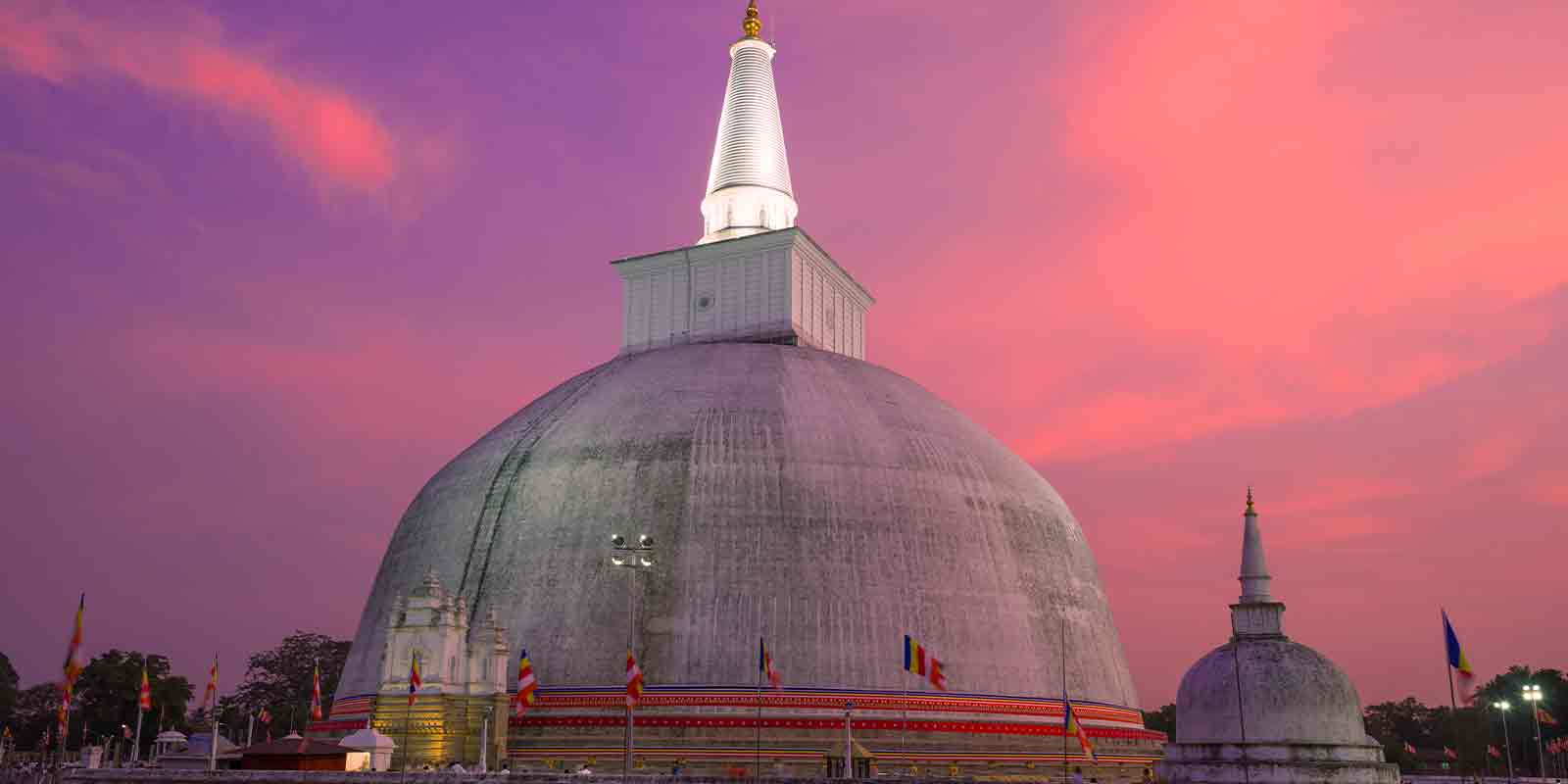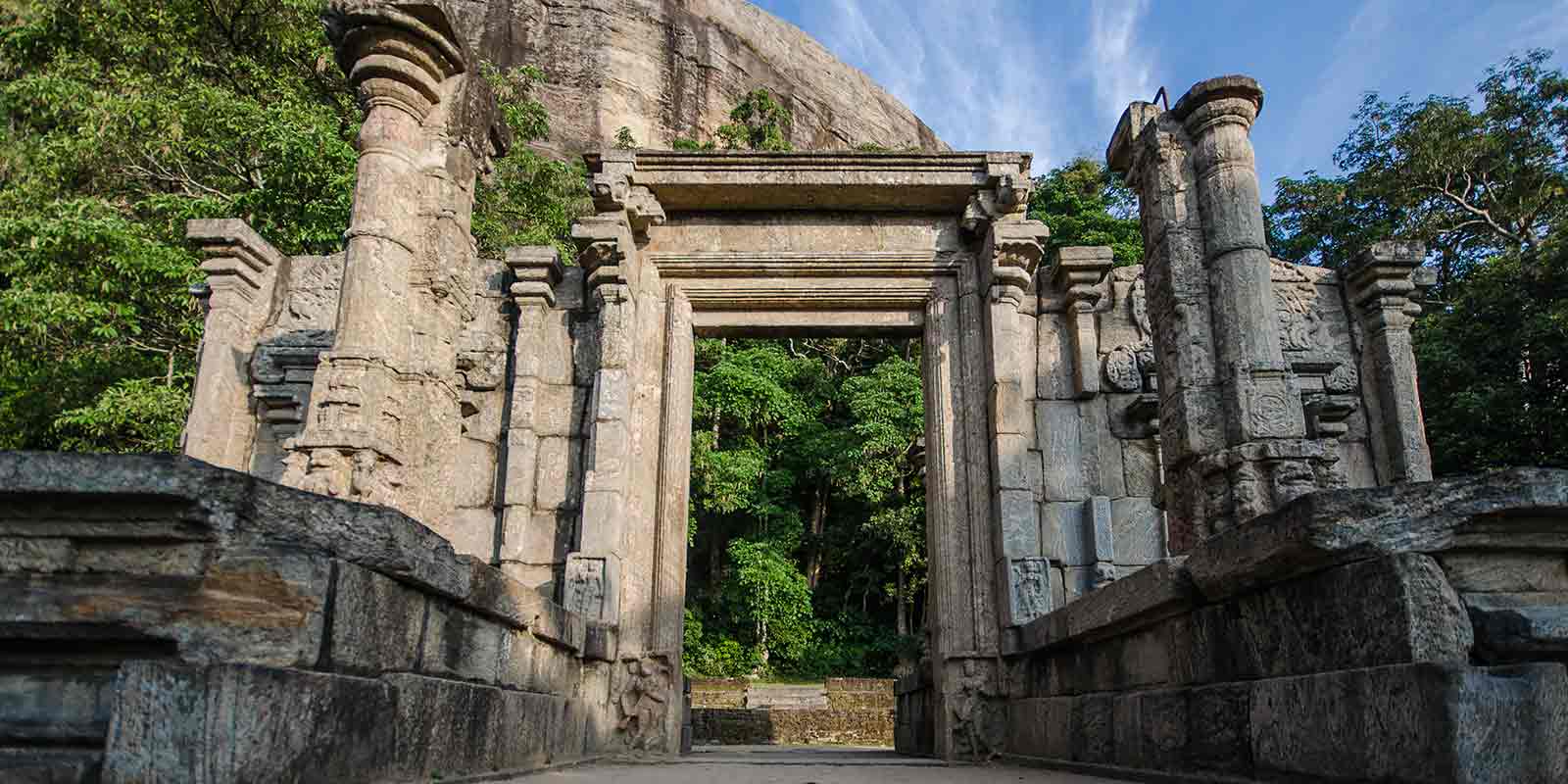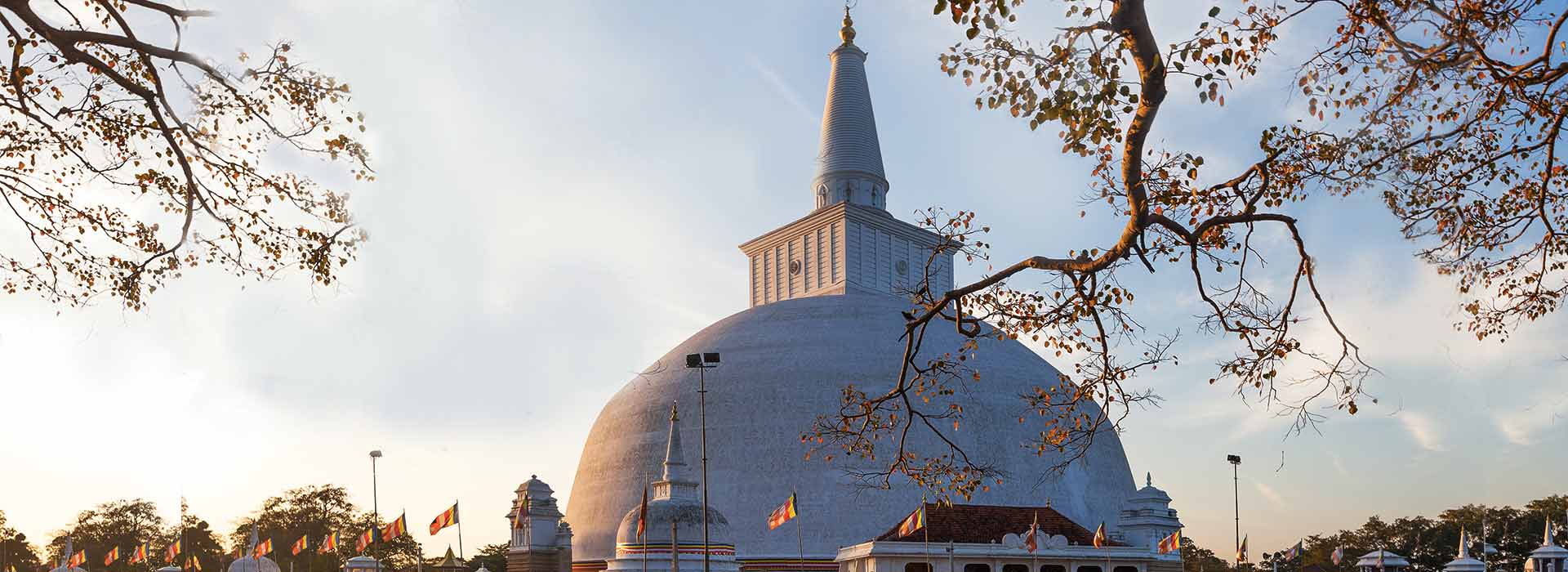Explore the Ancient Kingdoms of Sri Lanka: A Journey Through Time
Sri Lanka’s ancient kingdoms offer a compelling narrative of the island’s history, spirituality, and artistry dating back 2,500 years. Take a journey back in time into the ancient kingdoms of the island as you explore the ‘Cultural Triangle’ located in the Central l and North Central province of Sri Lanka. The grandeur of Anuradhapura and Polonnaruwa, the majesty of Sigiriya, and the religious devotion of Kandy’s Temple of the Sacred Tooth Relic invite travellers to immerse themselves in the captivating heritage of Sri Lanka.
Here’s a guide to the best places to visit to experience the most compelling ancient sites from Sri Lanka’s past:
Anuradhapura: The Cradle of Civilisation (4th century BC to 11th century AD)
Anuradhapura was one of the earliest and most significant civilisations to flourish on the island of Sri Lanka. The capital for many centuries, Anuradhapura was a center of Buddhist culture and learning.
 Stupas and Ruins: The Grandeur of the Sinhalese Civilisation
Stupas and Ruins: The Grandeur of the Sinhalese Civilisation
Anuradhapura is adorned with magnificent dagabas (stupas), palaces, and monastic complexes that showcase the grandeur of the ancient Sinhalese civilisation. Notable highlights include Jetavanarama, Ruwanveliseya, Thuparama, and Abhayagiri. These architectural marvels provide a glimpse into the rich history of the island and the deep spirituality of its people.
Jaya Sri Maha Bodhi: A Sacred and Historic Tree
The sacred Sri Maha Bodhi is believed to be the oldest historically authenticated planted Bodhi tree in the world. It is said to have grown from a sapling of the Bodhi tree under which Lord Buddha attained enlightenment, and is therefore a sacred site for Buddhist devotees.
Useful Tips:
- Anuradhapura can get hot, so visit the attractions early in the morning or late in the afternoon to avoid the scorching sun.
- Wear modest clothing when visiting religious sites. You must cover your shoulders and knees as a sign of respect.
Polonnaruwa: Medieval Marvels (11th to 13th century)
Polonnaruwa was the second capital of Sri Lanka, and the kingdom flourished during the medieval period. This era is known for its remarkable irrigation systems, exquisite stone carvings, and impressive architecture.
Gal Vihara: The Awe-Inspiring Rock-Cut Buddha Statues
Gal Vihara is an iconic site featuring rock-cut Buddha statues. The four statues, carved from a single rock, are a testament to the artistic prowess of the time.
Vatadage and Kiri Vehera: Intricately Designed Structures
Explore the intricately designed Vatadage, a circular relic house, and Kiri Vehera, a stupa adorned with intricate stone carvings. These structures reflect the architectural elegance of the Polonnaruwa era.
Parakrama Samudra: A Marvel of Irrigation
The Parakrama Samudra is a vast reservoir that served as a testament to the remarkable irrigation systems built during the Polonnaruwa era. This impressive feat of engineering highlights the island’s advanced civilisation.
Useful Tips:
- Polonnaruwa is a relatively compact site, making it ideal for exploring by bicycle. Rentals are readily available in the town.
- The mid-morning and late afternoon hours are the best times to explore Polonnaruwa. The temperature is milder, and the light is perfect for photography.
Sigiriya: The Lion Rock (5th century)
No exploration of Sri Lanka’s ancient kingdoms is complete without a visit to the Sigiriya Rock Fortress, also known as “The Lion Rock.” This UNESCO World Heritage Site is a testament to the island’s architectural and engineering advancements, and is probably the most recognised historic attraction in Sri Lanka.
Lion Paw Entrance: Ascend to Great Heights
Climb to the summit of Sigiriya through the lion paw entrance, a remarkable architectural feature that introduces you to this legendary fortress.
Frescoes of Sigiriya Maidens: A Glimpse of the Past
Explore the intricate ancient frescoes that adorn the rock’s surface, depicting the Sigiriya maidens. These vivid paintings offer a glimpse into the island’s artistic talents during this period.
Water, Terrace, and Boulder Gardens: A World Above
Wander through well-preserved water, terrace, and boulder gardens ingeniously designed around the rock fortress.
Useful Tips:
- The climb to the summit can be challenging, so wear comfortable, sturdy shoes and take your time. The effort is well worth the views at the top.
- The best time to visit Sigiriya is early in the morning to avoid the midday heat.
Guided tours are available, offering insights into the historical and cultural significance of Sigiriya.
Kandy: The Last Kingdom
The city of Kandy has great historic and religious significance. It was the last kingdom to fall to the European colonial powers, and to date, it is home to the Temple of the Sacred Tooth Relic, also known as the “Sri Dalada Maligawa.”
The Sacred Tooth Relic: A Symbol of Devotion
Explore the temple and witness the sacred tooth relic, a symbol of the country’s deep-rooted Buddhist heritage. The atmosphere is one of reverence and spirituality.
Esala Perahera: A Spectacle of Tradition
If your visit coincides with the grand Esala Perahera festival (between July-August), you’ll have the opportunity to witness the vibrant cultural procession where the tooth relic is paraded through the streets. The festival is a spectacular display of Sri Lankan traditions and pageantry.
Beyond the Temple: Embekke, Lankathilaka, and Gadaladeniya Temples
While in Kandy, be sure not to overlook the opportunity to explore a remarkable trio of temples:
– Embekke Devalaya – Nestled to the south of Kandy, Embekke is renowned for its exquisite wood carvings and the ornate drummer’s hall, dedicated to the Hindu deity Kataragama.
– Lankathilaka – Preceding Embekke Devalaya by several years, Lankathilaka captures more traditional Sinhalese design styles. The temple’s interior remains rather well-preserved.
– Gadaladeniya – Gadaladeniya sits atop a hill, offering beautiful views of the surrounding landscape. The temple’s 600+ year wooden doors are a particular highlight.
Useful Tips:
- When visiting the Temple of the Sacred Tooth Relic, dress modestly and remove your shoes before entering. It’s a place of worship and respect is expected.
- If you plan to attend the Esala Perahera festival, check the dates in advance and book your accommodations well ahead of time. It’s a popular event and rooms fill up quickly.
Yapahuwa: The Forgotten Kingdom
 Yapahuwa Rock Fortress: Strongholds of Old
Yapahuwa Rock Fortress: Strongholds of Old
The most iconic feature of Yapahuwa is its rock fortress. Perched atop a massive granite rock, this citadel presents an imposing sight, surrounded by lush greenery. The ascent to the top is an adventure in itself, rewarding you with panoramic views of the surrounding countryside.
Yapuhuwa Stairway: Onwards and Upwards
A steep stone staircase that seems to never end leads up to the Yapahuwa Rock Fortress. It is composed of three layers and is picturesque.
Useful Tips:
- Yapahuwa is best explored during the early morning or late afternoon to avoid the heat. The soft sunlight during these hours adds to the charm of the place.
- Carry a bottle of water with you, as you might need to refresh yourself as you reach the top of the stairway.
